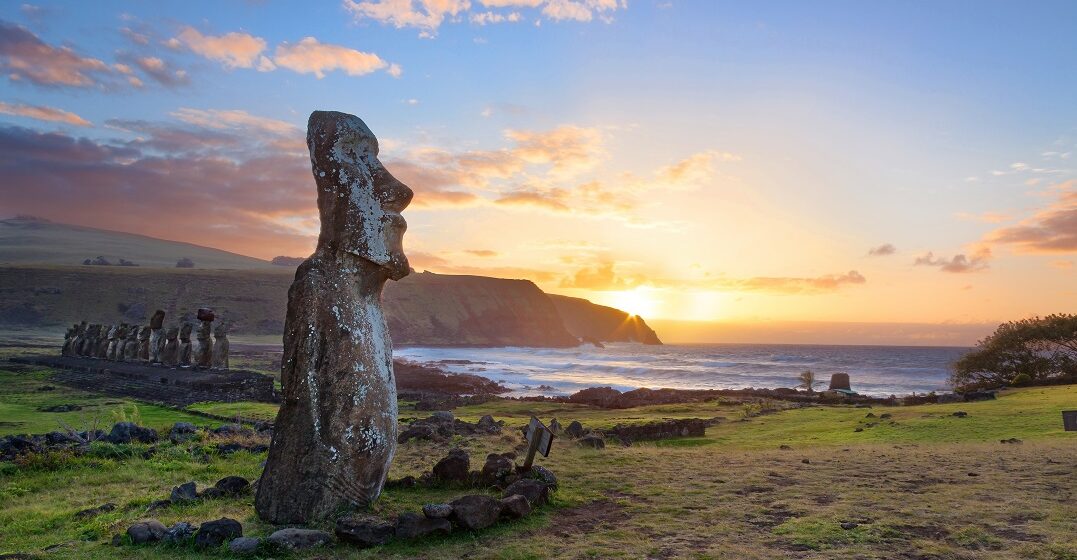Updated on October 15, 2024

21 interesting facts about 21 Spanish-speaking countries

The cultures of Spanish-speaking countries are as diverse as their accents. Whether you’re traveling or attempting to master the language, it’s important to learn a bit about the places where people speak Spanish on a daily basis. To that end, we’ve compiled 21 facts about Spanish-speaking countries that will take you to some unexpected places.
Did you know that there’s a country in Africa where many people speak Spanish as their first language? Can you name the 20 countries (plus one territory) where Spanish is an official language? How about their food, slang and history? We cover all of these and more in the following 21 interesting facts about Spanish-speaking countries.



Argentinians are crazy about soccer (or fútbol, as it’s called in Spanishorld). After all, Argentina is the home of Lionel Messi and Diego Maradona. So it may surprise you that the country’s traditional national sport is not fútbol, but rather pato.
Pato is a game played on horseback, in which two teams battle to throw a ball into a net. The ball once had a living duck (pato) inside, hence the name. Fortunately, modern versions of pato spare the duck.
Bolivia is home to some really cool women skateboarders called cholitas, who skate in a traditional Bolivian dress and hat. Check them out on Instagram or TikTok with their hashtag #imillaskate.
One of South America’s most seismically active countries, Chile had the strongest earthquake ever recorded on Earth in 1960. El Gran Terremoto de Chile (the Great Chilean Earthquake) was a staggering 9.5 on the Richter scale.
Colombia is home to some amazing cyclists. With Colombia’s towering mountains and dizzying altitude, the country has produced an impressive number of cycling world champions, including Nairo Quintana.
Penicillin was initially discovered by Costa Rican scientist Clodomiro Picado Twight, who published his work on the antibacterial effects of Penicillium molds in 1927 — a year before Scottish physician Alexander Fleming.
Cuba has high-quality doctors and free healthcare for all its citizens. This has helped the country achieve a child mortality rate lower than that of the United States and a life expectancy of 79.4 years, higher than that of nearly every other Latin American country.
Dominicans can dance! Merengue and bachata are vibrant dance and music genres that originated from Afro-descendent communities in the Dominican Republic.
Charles Darwin’s book On the Origin of Species, which contains his groundbreaking theory of evolution, came about thanks to his observations on an Ecuadorian archipelago, the Galapagos Islands.
When you hear street vendors saying “a cora, cora,” it means the cost is 25 US cents. The US dollar is the official currency in El Salvador, and the US quarter (worth 25 cents) is pronounced cora.
This coastal African country has Spanish as an official language due to its history of Spanish colonization. It’s also one of the richest African countries per capita, thanks to its oil reserves.
Some of the best chocolate in the world comes from Guatemala, near its birthplace. The ancient Mayans who inhabited Guatemala valued chocolate so much, they used it as currency. They even had a god of chocolate, Ek Chuaj.



The slang word cheque in Honduras means “OK.” So, if a catracho (person from Honduras) asks you, “Todo cheque?” (“Everything OK?”), you can respond with, “Sí, todo cheque.”
You may have heard of Día de los Muertos, or Day of the Dead, in Mexico. But have you heard the terrifying cry of “Ay mis hijos!” from the legend of La Llorona? This ghostly cry echoes through the streets during Halloween or Día de los Muertos. La Llorona (the Weeping Woman) is doomed to lament the tragic loss of her children forever.
You won’t find any street names or numbers in Nicaragua. Instead, you’ll have to locate specific addresses based on their relation to landmarks. An address in Managua might sound like, “Where the old cinema was, two blocks over, one block north.”
The famous Panama hat (jipijapa or toquilla) is actually Ecuadorian in origin. This traditional sombrero pintao is even recognized by UNESCO.
The yuca root is also known as el pan paraguayo (the Paraguayan bread). That’s because it is the principal carbohydrate in Paraguayan cuisine. In Paraguay, yuca is called mandioca.
The last leader of the Inca inspired modern hip-hop. American rapper Tupac Shakur named himself after Incan leader Tupac Amaru II, who led revolts against Spanish colonizers.
Puerto Rico is not an independent country due to imperialism, but it is a Spanish-speaking territory (some would say colony) of the United States. Puerto Ricans have two traditional coffee breaks, the first at 10 a.m. and the second at 3 p.m. They love it so much, it’s mandatory at work.
The famous Spanish dish known as tapas began as slices of cheese or cured ham that sat on top of a diner’s wine glass. These tapas had a practical use: They helped to prevent files or bugs from getting into the wine.
Uruguayans are known for their socially progressive culture, which carries over into the country’s laws. Uruguay was the first country in Latin America to legalize women’s suffrage in 1917, the second country in Latin America to legalize same-sex marriage in 2013, and the first to legalize cannabis, (also in 2013).
The round, cornmeal arepa is a delicious traditional Venezuelan dish. Venezuela holds the Guinness World Record for the largest arepa, which weighed in at 493 kilograms (1,087 pounds) with a diameter of 6 meters (20 feet)!
Now that you’re an expert on fun facts about Spanish-speaking countries, try to impress your friends with “Sabías que…” (“Did you know that…?”) statements. These unique facts may even impress native speakers. You’ll have them saying, “Nunca lo supe!” (“I never knew that!”).


